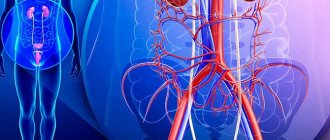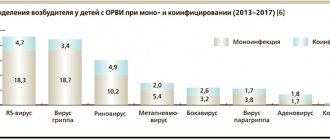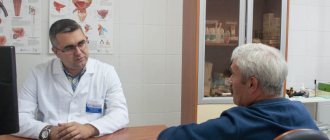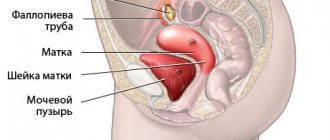1.What is chronic interstitial nephritis and its causes?
Chronic interstitial (tubulointerstitial) nephritis, abbreviated as CIN, is a non-infectious inflammatory disease of the kidneys. In chronic interstitial nephritis, the renal tubules and interstitial tissue are affected.
Causes of chronic interstitial nephritis
The causes of CIN can be very different. Acute interstitial nephritis (AIN)—untreated or undiagnosed—can develop into chronic interstitial nephritis. However, much more often chronic interstitial nephritis appears without AIN. The causes of interstitial nephritis can be:
- Intoxication of the body;
- Radiation;
- Metabolic disorders;
- Problems with the immune system;
- Infections;
- Abuse of certain drugs (analgesics, antipyretics and non-steroidal anti-inflammatory drugs).
It is also worth mentioning that in approximately every fifth patient the cause of chronic interstitial nephritis cannot be determined.
A must read! Help with treatment and hospitalization!
Medical reference books
Tubulointerstitial nephritis
ICD-10: N10-N12
general information
Tubulointerstitial nephritis (TIN) is a heterogeneous group of nonspecific lesions of the tubules and interstitial tissue of the kidney with the spread of the inflammatory process to all structures of the renal tissue of infectious, allergic or toxic origin and can be acute or chronic.
Epidemiology The incidence of TIN is 0.7 cases per 100,000 population. Typically, acute TIN is the underlying cause of “unknown renal failure” with preserved urine output and normal kidney size. Kidney disease affecting exclusively the tubules and interstitium accounts for 20-40% of cases of chronic renal failure (CRF) and in 10-25% causes acute renal failure (ARF). Men and women suffer from acute TIN with the same frequency with the following distribution of patients by age: 1/4 - less than 20 years, 1/3 - 20-40 years, and 1/3 - over 40 years, which indicates the absence of age gradation regarding frequency diseases.
Etiology The causes of AIN can be varied, but more often its occurrence is associated with taking medications, especially antibiotics (penicillin and its semisynthetic analogues, aminoglycosides, cephalosporins, rifampicin, etc.). Often the etiological factors of AIN are sulfonamides, non-steroidal anti-inflammatory drugs (indomethacin, methindol, brufen, etc.), analgesics, immunosuppressants (azathioprine, imuran, cyclophosphamide), diuretics, barbiturates, captopril, allopurinol. Cases of the development of AIN as a result of taking cimetidine after the administration of radiocontrast agents have been described. It may be a consequence of increased individual sensitivity of the body to various chemicals, intoxication with ethylene glycol, ethanol. CIN is a polyetiological disease. It may be a consequence of untreated, or not diagnosed in a timely manner, AIN. However, it more often develops without previous acute interstitial nephritis. In such cases, the reasons for its occurrence are very diverse - a consequence of medication, household and industrial intoxications, radiation exposure, metabolic disorders, infections, immune changes in the body, etc. Among the listed and many other etiological factors, the leading role in the occurrence of CIN belongs to the long-term use (abuse) of drugs, of which the first place in importance is occupied by analgesics (phenacetin, analgin, amidopyrine, butadione, etc.), and in recent years - non-steroidal anti-inflammatory drugs (NSAIDs (indomethacin, methindol, voltaren, acetylsalicylic acid, brufen, etc.)).
Pathogenesis Acute interstitial nephritis The mechanism of occurrence and development of this disease has not been fully elucidated. The idea of its immune genesis is considered the most substantiated. In this case, the initial link in the development of AIN is the damaging effect of the etiological factor (antibiotic, toxin, etc.) on the protein structures of the tubular membranes and interstitial tissue of the kidneys with the formation of complexes that have antigenic properties. Then the humoral and cellular mechanisms of the immune process are turned on, which is confirmed by the detection of antibodies circulating in the blood against tubular basement membranes and elements of interstitial tissue, an increase in the titer of IgG, IgM and a decrease in the level of complement. Schematically, this process is presented as follows (B. I. Shulutko, 1983). A foreign substance that is the etiological factor of AIN (antibiotic, chemical agent, bacterial toxin, pathological proteins formed as a result of fever, as well as proteins of administered serums and vaccines), penetrating the bloodstream, enters the kidneys, where it passes through the glomerular filter and enters the lumen of the tubule. Here it is reabsorbed and, passing through the walls of the tubules, causes damage to the basement membranes and destroys their protein structures. As a result of the interaction of foreign substances with protein particles of basement membranes, complete antigens are formed. Similar antigens are also formed in interstitial tissue under the influence of the same substances penetrating into it through the walls of the renal tubules. Subsequently, immune reactions of interaction of antigens with antibodies occur, with the participation of IgG and IgM and complement, with the formation of immune complexes and their deposition on the basement membranes of the tubules and in the interstitium, which leads to the development of the inflammatory process and those histomorphological changes in the renal tissue that are characteristic of OIN. In this case, a reflex spasm of the vessels occurs, as well as their compression due to the developing inflammatory edema of the interstitial tissue, which is accompanied by a decrease in renal blood flow and ischemia of the kidneys, including in the cortical layer, and is one of the reasons for the decrease in glomerular filtration rate (and, as a consequence of this , – increased levels of urea and creatinine in the blood). In addition, swelling of the interstitial tissue is accompanied by an increase in intrarenal pressure, including intratubular pressure, which also adversely affects the process of glomerular filtration and is one of the most important reasons for the decrease in its rate. Consequently, the drop in glomerular filtration in AIN is due, on the one hand, to a decrease in blood flow (ischemia) in the renal cortex, and on the other, to an increase in intratubular pressure. Structural changes in the glomerular capillaries themselves are usually not detected. Damage to the tubules, especially the distal sections, including the tubular epithelium, with simultaneous swelling of the interstitium leads to a significant decrease in the reabsorption of water and osmotically active substances and is accompanied by the development of polyuria and hyposthenuria. In addition, long-term compression of the peritubular capillaries aggravates the impairment of tubular functions, contributing to the development of tubular acidosis, decreased protein reabsorption and the appearance of proteinuria. A decrease in the resorptive function of the tubules is also considered as one of the factors contributing to a decrease in the glomerular filtration rate. Disturbances of tubular functions occur in the first days from the onset of the disease and persist for a long time, for 2-3 months or more.
Chronic interstitial nephritis It is believed that CIN has its own characteristics depending on the cause that caused this disease. Thus, some drugs (salicylates, caffeine, etc.) have a direct damaging effect on tubular epithelial cells, causing dystrophic changes in them with subsequent rejection. At the same time, there is no convincing evidence in favor of a direct nephrotoxic effect of phenacetin on the tubular structures of the kidneys. There is an opinion that in the pathogenesis of phenacetin nephritis, the decisive role is played by the damaging effect on renal tissue not of phenacetin itself, but of its intermediate metabolic products - paracetamol and P-phenetidine, as well as hemoglobin degradation products, mainly methemoglobin, formed under the influence of phenacetin. With prolonged exposure to analgesics and NSAIDs on renal tissue, profound changes in enzyme activity occur, leading to metabolic disorders and hypoxia in the interstitial tissue and persistent changes in the structure and function of the tubular apparatus of the kidneys. In particular, acetylsalicylic acid has a toxic effect on the enzyme systems of the tubular epithelium at the level of the medulla. In the pathogenesis of analgesic nephropathy, renal ischemia, resulting from vasoconstriction, which, in turn, is caused by the inhibition of prostaglandin synthesis by analgesics, also plays a significant role. In addition, analgesics can also cause necrotic changes in the renal medulla, mainly in the area of the renal papillae. The inflammatory process begins precisely from this zone, and then spreads to other parts of the medullary layer and the cortex. In this case, the development of both papillary necrosis and papillary sclerosis is possible. More often, papillary necrosis is observed, manifested by the development of acute ischemic infarction of the terminal or middle part of the papilla. The resulting fragments of disintegration of the renal papilla can cause obstruction of the ureter, with the subsequent development of hydronephrosis. Papillary necrosis may be complicated by infection or manifest as nonbacterial inflammation. At the same time, nephron loops and vasa recta are involved in the pathological process earlier and to the greatest extent, which leads to the development of medullary dysfunction with impaired urine concentration and electrolyte metabolism, with the subsequent development of dehydration of the body. In the origin of CIN, the state of reactivity of the body, its individual sensitivity to drugs, is also of significant importance, which is supported by the fact that this disease does not develop in everyone who uses phenacetin or other analgesics for a long time. The possibility of autoimmune genesis of CIN as a result of the formation of “drug + kidney tissue protein” complexes with antigenic properties cannot be ruled out. Immune changes in CIN are also manifested by a decrease in the absolute number and change in the functional state of T-lymphocytes, and a decrease in the ability for blast transformation. Increased levels of IgG and IgM are found in the blood of such patients. However, antibodies to the basement membranes of the tubules are detected in the blood relatively rarely (in approximately 7% of patients), and immune complexes in the renal tissue are even less common. With phenacetin CIN they are not detected at all.
Classification
According to ICD-10: - N10 - acute tubulointerstitial nephritis; — N11 – chronic tubulointerstitial nephritis; - N12 - unspecified acute or chronic tubulointerstitial nephritis. The generally accepted classification of tubulointerstitial nephritis is consistent with the statistical classification of diseases ICD-10 and was adopted by the II National Congress of Nephrologists of Ukraine (Kharkov, 2005).
Diagnostics
The diagnosis of acute interstitial nephritis is made on the basis of a combination of signs: - development of renal failure, often when identifying a possible etiological factor (use of drugs, after an infectious disease, etc.); - acute onset (3-5 days after possible exposure to the etiological factor); - absence of oligoanuria phase; — presence of urinary syndrome (proteinuria, hematuria); - hypoisosthenuria before the development of renal failure; — increase in creatinine level against the background of preserved diuresis or polyuria; - absence of other causes of acute renal failure: sepsis, abortion, etc. - absence of hyperkalemia characteristic of acute renal failure.
Complaints Most patients complain of general weakness, sweating, headache, aching pain in the lumbar region, drowsiness, decreased or loss of appetite, and nausea. Often the mentioned symptoms are accompanied by chills with fever, muscle aches, sometimes polyarthralgia, and allergic skin rashes. In some cases, moderate and short-term arterial hypertension may develop. Edema is not typical for AIN and is usually absent. Dysuric phenomena are not usually observed. In the vast majority of cases, polyuria with low relative density of urine (hyposthenuria) is noted from the first days. Only in very severe cases of AIN at the onset of the disease is there a significant decrease (oliguria) in urine, up to the development of anuria (combined, however, with hyposthenuria) and other signs of acute renal failure. Subjective symptoms of CIN are nonspecific, develop gradually and increase gradually. These are complaints of general weakness, malaise, increased fatigue, decreased performance, headache, and decreased appetite. Later, aching pain in the lumbar region, thirst, dry mouth, frequent urge to urinate, and an increase in the daily amount of urine appear.
Mandatory laboratory tests - General blood test (leukocytosis with a moderate shift of the formula to the left, eosinophilia, increased erythrocyte sedimentation rate (ESR), carried out weekly for up to 1 month; - biochemical blood test (increased a2- and b-globulins, creatinine and urea), up to 2 times a month; - general urine analysis (proteinuria within 1-3 g/day, hematuria - 10-30 red blood cells in the field of view, leukocyturia - 10-20 copies in the field of view, decrease in the relative density of urine), up to 2 times a month month; - daily protein excretion in urine, up to 2 times a month; - urine analysis according to Nechiporenko, up to 2 times a month; - urine analysis according to Zimnitsky.
Mandatory instrumental studies - Ultrasound examination of the kidneys (the kidneys are enlarged in size, especially in thickness) with pulsed Doppler sonography; — blood pressure control; — electrocardiography; — ultrasound examination of internal organs.
Additional laboratory and instrumental studies - Bacteriological urine culture; - concentration of urates, phosphates, oxalates in blood and urine; - biochemical urine analysis (increased sodium and ammonium concentrations); — immunological studies (increased IgE levels, decreased levels of complement in the blood, increased excretion of secretory IgA); — radioisotope study of the kidneys; - kidney biopsy.
Differential diagnosis When differential diagnosis of AIN, first of all, it is necessary to keep in mind acute glomerulonephritis and acute pyelonephritis. Unlike AIN, acute glomerulonephritis does not occur against the background, but several days later, or 2-4 weeks, after a focal or general streptococcal infection (tonsillitis, exacerbation of chronic tonsillitis, etc.), i.e. AGN is characterized by a latent period. Hematuria with AGN, especially in typical cases, is more pronounced and more persistent than with AIN. At the same time, in patients with interstitial nephritis, leukocyturia is more common, more pronounced and more characteristic, which usually prevails over hematuria. Moderate transient hyperazotemia is also possible with AGN, but develops only during the rapid, severe course of the disease, against the background of oliguria with high or normal relative density of urine, while AIN is characterized by hyposthenuria even with severe oliguria, although more often it is combined with polyuria. Morphologically (according to puncture biopsy of the kidney), the differential diagnosis between these two diseases is not difficult, since AIN occurs without damage to the glomeruli and, therefore, there are no inflammatory changes in them, characteristic of AGN. Unlike AIN, acute pyelonephritis is characterized by dysuric phenomena, bacteriuria, as well as changes in the shape and size of the kidneys, deformation of the pyelocaliceal system and other congenital or acquired morphological disorders of the kidneys and urinary tract, often detected by X-ray or ultrasound examination. A puncture biopsy of the kidney, in most cases, allows for a reliable differential diagnosis between these diseases: histomorphologically, AIN manifests itself as an abacterial non-destructive inflammation of the interstitial tissue and tubular apparatus of the kidneys without involving the pyelocaliceal system in this process, which is usually characteristic of pyelonephritis.
Consultations with other specialists - Otorhinolaryngologist: determining the source of a possible infection; - ophthalmologist: fundus picture; — dentist: determining the source of possible infection; — gastroenterologist: tolerability of prescribed drugs; — infectious disease specialist: determining the source of a possible infection; — cardiologist: determination of changes in the cardiovascular system; - hematologist; - endocrinologist; - urologist; - gynecologist: determining the source of a possible infection.
Treatment
Regimen During the period of advanced clinical manifestations - gentle bed rest for at least a week from the onset of the disease (or exacerbation). Expansion of the regime (room) - with a decrease in the activity of the pathological process. The period of remission is a general regimen according to age, with the limitation of prolonged orthostatic loads and the exclusion of hypothermia. Physical and mental overload and hypothermia are contraindicated.
Diet therapy Diet No. 7 with restriction of spicy foods, seasonings, kitchen salt. With the development of chronic renal failure - protein restriction. Treatment should be carried out in a specialized nephrology hospital. It consists of identifying and eliminating the cause and removing the drug from the body that caused the disease. Acute tubulointerstitial nephritis with the development of acute renal failure often requires emergency treatment, similar to syndromic therapy of acute renal failure, correction of water and electrolyte disturbances, acid-base balance, and the use of desensitizing agents, provided that the disease is of immune origin. It is necessary to discontinue the medicine that caused the disease. If acute tubulointerstitial nephritis occurs as a result of microbial toxicity, it is necessary to use therapy, depending on the pathogen.
For a viral infection - antiviral drugs: - metisazone - 0.6 g up to 2 times a day; — acyclovir – 0.2 g up to 5 times a day; — ribavirin – 0.2 g up to 4 times a day; — rimantadine – 0.05 g up to 8 times a day.
For bacterial infection - antibiotics: 1) for oral administration: - norfloxacin - 0.4 g 2 times a day; — ciprofloxacin – 0.5 g 2 times a day; — levofloxacin – 0.25 g once a day; — pefloxacin – 0.4 g 2 times a day; — amoxicillin/clavulanate – 0.625 g every 8 hours; — ceftibuten – 0.4 g once a day; — cefaclor – 0.5 g 3 times a day; — cefuroxime – 0.5 g 3 times a day; - cefixime - 0.4 g 1-2 times a day, course for 10-14 days; 2) for parenteral administration: - levofloxacin - 0.5 g 1 time per day; — pefloxacin – 0.4 g 2 times a day; — amoxicillin/clavulanate – 1.2 g every 8 hours; — ampicillin/sulbactam – 3.0 g 4 times a day; - cefuroxime - 1.5 g every 8 hours; — cefoperazone – 2 g every 8 hours; — ceftriaxone – 2.0 g 2 times a day; - imipenem, meropenem - 0.5 g every 8 hours. The course is until the temperature normalizes. Do not prescribe nephrotoxic drugs, which themselves can cause the development of tubulointerstitial nephritis. In the case of abortive and acute forms, desensitizing therapy is prescribed: - calcium gluconate - up to 3 g per day; — ascorbic acid – 0.2 g 3 times/day; — rutin – 0.02-0.05 g 2-3 times/day. For toxic-allergic tubulointerstitial nephritis, glucocorticoids are prescribed: - prednisolone - 30-40 mg per day for 5-10 days; - antihistamines: - tavegil - 0.001 g 3 times a day; - Diphenhydramine - 0.05 g 3 times a day. In the case of autoimmune genesis of tubulointerstitial nephritis, the prescription of a long course of glucocorticoids in combination with cytostatics is justified. In cases of drug overdose or their accumulation, in case of poisoning, hemosorption, plasmapheresis, antidotes are used to quickly remove the drug and its metabolites: - 5% unithiol - 1 ml/10 kg of weight intramuscularly for 5-7 days; - 10% Trilon B - 20-40 ml of solution in 500 ml of 5% glucose solution intravenously for 5-7 days. Treatment, first of all, should be aimed at eliminating the causes of acute renal failure. In case of hemodynamic disturbances (collapse, shock), anti-shock therapy is carried out to eliminate hypotension and dehydration. In case of acute poisoning, treatment is supplemented with means of removing poison from the body: - gastric lavage; — infusion therapy; - forced diuresis; - hemodialysis; - hemosorption; — plasmapheresis; - peritoneal dialysis. In the presence of massive intravascular hemolysis, blood transfusion, plasmapheresis with replacement with plasma or albumin solution is necessary. If the cause of acute renal failure is bacterial shock, in addition to anti-shock treatment, antibiotics are prescribed. Surgical debridement of acute infection is required (wound opening, wound drainage). Therapy of the anuric stage of acute renal failure is a comprehensive program that should be aimed at: - correction of homeostasis; - selection of optimal treatment for the underlying disease and acute renal failure, depending on its cause, form, stage and severity; — prevention and treatment of complications of acute renal failure. Water balance in the oligoanuric stage is controlled by the volume of fluid administered and urine excreted. Diuresis, in the absence of hypovolemia, is stimulated by intravenous diuretics. A prerequisite for prescribing diuretics in acute renal failure is a systolic blood pressure level above 60-70 mmHg. If anuria lasts no more than 24 hours, administration of 200 ml of a 20% solution of Manitol with 400-800 mg of Lasix is indicated. If there is no effect, you should prescribe: - dopamine - 3-5 mcg/kg/min; — furosemide – 10-15 mg/kg/hour. The infusion is carried out for 6-24 hours. If treatment is ineffective, hemodialysis is necessary. In order to reduce protein catabolism, subject to infusion therapy, use
glucose solutions: - 10% glucose solution - up to 500.0 ml with 24 units of insulin; amino acid preparations: - infezol 40 - up to 6-8 ml/kg per day; — aminoplasmal hepa – up to 6-8 ml/kg per day; — hepasol – up to 6-8 ml/kg per day;
fat emulsions: - lipofundin - up to 500.0 ml per day. In addition to central venous pressure, a possible indicator of monitoring the patient's hydration volume may be daily monitoring of the patient's weight. Fluctuations in body weight every other day should not exceed 0.5-1% of the initial values.
Correction of electrolyte balance is carried out based on readings of the concentration of potassium, sodium, calcium, magnesium and chlorine. In order to prevent hyperkalemia, foods with a high potassium content (potatoes, plums, apricots, grapes, apricots, etc.) are removed from the diet. If there is a threat of hyperkalemia, patients are administered slowly, under pulse rate control, intravenously 20 mg/kg body weight of calcium gluconate (a functional K+ antagonist). The dose can be doubled throughout the day. The effect appears after 30-60 minutes. For intestinal removal of potassium, it is possible to use potassium exchange resin 0.5-1.0 mg/kg body weight, in combination with a 70% sorbitol solution 0.5 ml/kg orally or 1.0-1.5 ml/kg rectally. Significant hyperkalemia (6 mmol/l and above) is an absolute indication for hemodialysis.
Correction of acidosis: Washing the stomach and intestines with alkaline solutions, prescribing alkaline waters, using a solution of sodium lactate or sodium bicarbonate (3-5 ml of a 4% solution per 1 kg of body weight per day 4-6 times).
Improving microcirculation It is necessary to prescribe heparin (20,000-30,000 units per day under the control of blood clotting time), trental internally at a dose of 3-5-8 mg/kg/day. If oliguria continues, the symptoms of uremia increase, conservative treatment is unsuccessful for 5-7 days, there is an increase in potassium levels above 6.5 mmol/l, metabolic acidosis that cannot be corrected, creatinine levels exceed 0.7 mmol/l, overhydration increases with clinical and radiological manifestations of pulmonary edema, hemodialysis is used. Timely use of hemodialysis prevents the development of severe complications of acute renal failure. In case of prolonged tissue compression syndrome, poisoning with nephrotoxic substances that are dialyzed (ethyl and methyl alcohol, barbiturates), hemodialysis is urgently necessary. The purpose of hemodialysis is to maintain zero water balance, correct electrolytes and acid-base balance. In the absence of hemodialysis equipment, as well as in the presence of contraindications (thromboembolic disease, cerebral hemorrhage, gastrointestinal bleeding), peritoneal dialysis or intestinal dialysis (removal of excess fluid by creating drug-induced diarrhea) is used to treat acute renal failure. For hypervitaminosis D, infusion therapy with glucocorticoids is prescribed: - hydrocortisone - up to 500 mg per day intravenously or - prednisolone - up to 300 mg per day intravenously or - dexamethasone - up to 24 mg per day intravenously; — vitamin A – in a dose of up to 100,000 IU orally; - unithiol in the form of a 5% solution - 1-2 ml/10 kg of weight intramuscularly for 5-7 days; - thyrocalcitonin. Diuretics are not prescribed for azotemia due to polyuria, as they aggravate hyponatremia. Antiplatelet agents and angioprotectors are prescribed: - dipyridamole (chimes) - at a dose of 3-5 mg/kg/day daily (daily dose - 200-400 mg) for 1-6 months; - pentoxifylline (trental or agapurine) - intravenously or orally at a dose of 3-5-8 mg/kg per day for 2-4 weeks. For all types of tubulointerstitial nephritis, herbal medicine is indicated to improve uro- and lymphodynamics, reduce aseptic inflammation (coltsfoot, mint, oats) for 2 weeks of each month; immune stimulants (lysozyme, prodigiosan); drugs that support renal plasma flow (lipin) and vitamin preparations are used.
Criteria for the effectiveness of treatment - Recovery - complete normalization of indicators; - complete clinical and laboratory remission - complete normalization of indicators; - partial clinical and laboratory remission - absence of edema, normalization of blood cholesterol levels, a tendency towards normalization of proteinogram parameters, a decrease in proteinuria; - no effect - lack of positive dynamics of clinical and laboratory parameters.
Criteria for the effectiveness of therapy are determined by: - duration of remission; — signs of chronic tubulointerstitial nephritis; — the rate of progression of tubulointerstitial nephritis and the development of chronic renal failure; — quality of life of the patient; - patient's life expectancy.
Dispensary observation is carried out by a nephrologist at the clinic to establish the nature of the course of the disease (stable, progressive) based on periodic (twice a year) examinations of the patient, the dynamics of urine and blood tests, and determination of the functional state of the kidneys. It is necessary to exempt the patient from vaccinations, recommend reducing physical and mental stress, and sanitize chronic foci of infection. The duration of clinical observation after acute interstitial nephritis is 5 years. It is imperative to examine the patient after respiratory infections, injuries, hypothermia, etc. Patients are contraindicated from working in hazardous conditions. After acute tubulointerstitial nephritis, it is advisable to relieve overload and provide a gentle regime for at least 3-4 months. The ability to work in patients who have recovered is completely restored. In the case of chronic renal failure, the frequency of examinations of the patient increases to 4-6 times a year.
2. Symptoms of the disease
Symptoms of chronic interstitial nephritis are rarely pronounced, and often they are absent altogether. If CIN is caused by drug abuse, then the symptoms may not be noticeable for a long time due to the symptoms of the disease for which the drugs were taken.
Symptoms of chronic interstitial nephritis are:
- Urinary syndrome;
- Anemia;
- Arterial hypertension;
- Kidney failure.
In addition, patients with chronic interstitial nephritis note:
- Fatigue;
- Headache;
- Decreased appetite;
- Fatigue and general weakness;
- Thirst;
- Frequent urge to urinate.
Visit our Nephrology page
Diagnostics
Laboratory indicators are characterized by anemia, increased ESR, hyperproteinemia, hypergammaglobulinemia.
In diagnostic terms, other (extrarenal) signs of an allergic reaction are important: fever, skin rashes, arthralgia, drug-induced hepatitis, etc. However, the classic triad - fever, skin rashes and arthralgia - occurs only in 15 - 20% of cases. All of our 19 patients with acute drug-induced IN had one or another extrarenal manifestations of the disease, the most common of which was fever, observed in 2/3 of the patients, then skin syndrome, and arthralgia was much more rare. All patients had a sharp increase in ESR - up to 40 - 60 mm/h, more than half had anemia, a third had hyperproteinemia, and the vast majority had hypergammaglobulinemia.
Criteria for diagnosing acute drug-induced ID:
- temporary connection with taking medications;
- moderate urinary syndrome with proteinuria not exceeding 2 g/day, predominance of red blood cells in urine sediment;
- non-oliguric acute renal failure of varying severity, not accompanied by hyperkalemia and arterial hypertension;
- a high frequency of various tubular disorders, among which a concentration defect occurs in 100% of cases;
- protein shifts in the form of an increase in ESR, hyperproteinemia and hypergammaglobulinemia;
- anemia;
- extrarenal manifestations in the form of fever, skin syndrome, and liver damage.
4. Treatment of chronic interstitial nephritis
The first step in treating chronic interstitial nephritis is to stop taking medications that negatively affect the kidneys. With early diagnosis, this can prevent the disease, and at later stages, stop or slow down the destructive processes.
The rest of the treatment for chronic interstitial nephritis is symptomatic. Medicines and vitamins are prescribed to support kidney function. Depending on your symptoms and underlying medical conditions, dietary changes may be necessary. In severe cases, intravenous infusion of electrolytes and fluids is performed.








